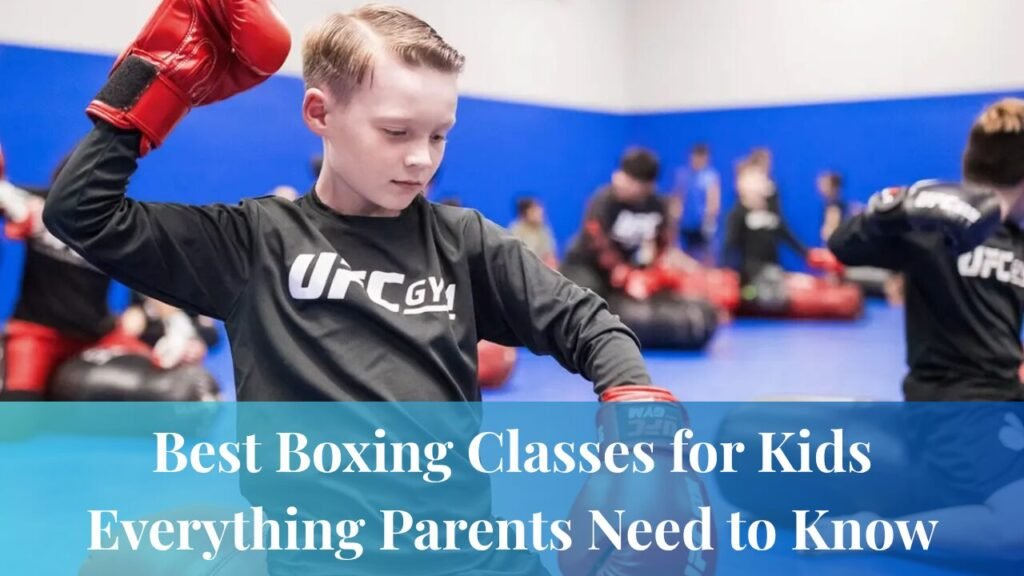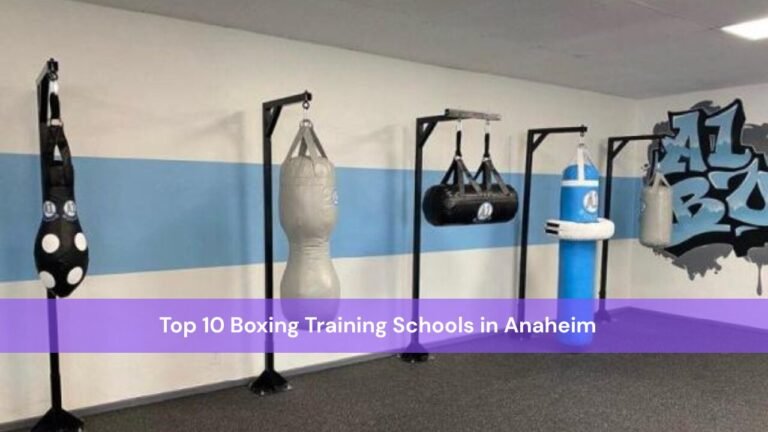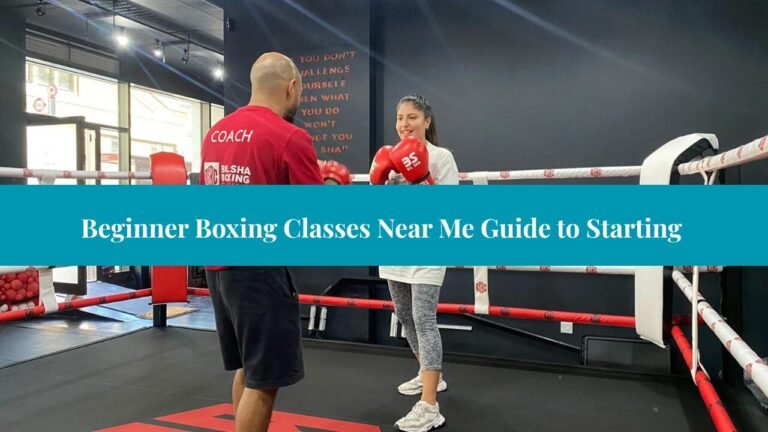Boxing classes offer much more than just teaching punches and footwork. For kids, these classes provide an energetic and supportive environment where they can release energy, stay active, and learn core values such as discipline, respect, and resilience. Youth boxing helps children build confidence, develop focus, and establish habits that support both physical and emotional health.
The positive impact of boxing reaches far beyond the gym. Regular participation can improve a child’s strength, coordination, endurance, and even mental clarity. Children gain a sense of accomplishment as they master self-defense skills and techniques. Boxing also helps kids manage stress, sleep better, and even perform better in school. For many children, it becomes a fun and engaging way to stay healthy and learn valuable life lessons at the same time.
What Age Can Kids Start Boxing?
Children can typically begin boxing at an early age, with introductory programs starting for kids as young as four. These early sessions, often designed for ages four to seven, are playful and focused on teaching basic movements, teamwork, and discipline in a non-intimidating way. These shorter classes usually emphasize footwork, balance, and cooperation through fun drills and games that help children learn while enjoying themselves.
Once children reach about eight years old, many gyms offer more structured youth fitness programs that introduce foundational boxing techniques. These classes often include activities such as jump rope, shadowboxing, and beginner-level bag work. At this stage, kids begin learning proper form and simple combinations. As they grow and progress, more advanced programs become available that include partner drills, conditioning, and competitive preparation for those interested in taking boxing to the next level. However, for most participants, the primary focus remains on self-improvement and personal growth, not competition.
What Happens in a Typical Kids’ Boxing Class?
A standard boxing class for kids typically lasts between 45 to 60 minutes and is designed to be a mix of learning and fun. The class usually starts with a warm-up to get the body ready, including light cardio like jogging or jump rope and stretching exercises. Some sessions also incorporate games that boost agility and coordination while keeping things light-hearted and enjoyable.
After warming up, the focus shifts to skill development. Children practice shadowboxing, hit the heavy bags, or work with focus mitts to refine their punches and movements. The training helps them develop better form, rhythm, and control. Conditioning follows with exercises like push-ups, squats, and core work, which help strengthen the body in a way that supports boxing. Classes usually finish with a cool down and group discussion to reflect on what was learned, reinforcing both technique and motivation in a supportive way.
Fun & Interactive Warm-Ups Kids Love
Coaches understand the importance of keeping warm-ups exciting, especially for younger kids. Creative warm-up routines are designed to blend fun with physical preparation. Activities like bear crawls, duck walks, and imitation games engage the children’s imagination while developing strength and flexibility. Relay races, speed ladder drills, and obstacle courses encourage kids to move quickly and think fast on their feet.
These types of interactive games not only help prepare the body for training but also engage kids mentally, improving their focus and coordination. They also help build team spirit, setting a positive tone for the rest of the session.
Gear Checklist: What Kids Need for Boxing Class
Before attending a boxing class, it’s important to make sure your child has the right equipment. Youth-sized boxing gloves provide hand protection suited for smaller hands, and hand wraps help support the wrists and knuckles during training. Comfortable athletic wear and proper shoes, or clean sneakers, are also essential to keep your child moving safely and comfortably.
Some gyms recommend bringing a water bottle to stay hydrated and a mouthguard, especially for those in advanced or sparring programs. While sparring isn’t part of beginner classes, having quality gear supports safety and ensures your child gets the most out of every session. Choosing breathable materials also helps keep them comfortable and focused during training.
Is Boxing Safe for Children?
When taught properly in a structured environment, boxing is safe for kids. Most beginner-level programs emphasize non-contact training and focus on technique, fitness, and discipline rather than sparring or heavy impact. Gyms that specialize in youth boxing follow a gradual progression model, allowing children to build skills step-by-step in a supervised and safe way.
Certified youth boxing coaches are trained to ensure the safety of each participant. They guide warm-ups, monitor drills, and introduce protective gear in advanced stages. With appropriate supervision and proper equipment, boxing injuries are rare, especially when compared to other high-contact youth sports like football or hockey. Studies and youth sports organizations like USA Boxing support the safety of these structured programs for children.
How to Pick the Right Boxing Class for Your Child
Choosing the right boxing class for your child involves more than just finding the nearest gym. It’s essential to ensure the instructors are certified and experienced in working with kids. A child-focused program should offer small class sizes so every student receives personal attention and guidance. Many reputable gyms also offer trial classes so parents and children can get a feel for the environment before committing.
Pay attention to the overall atmosphere of the gym. It should be clean, well-lit, and equipped with proper gear. You’ll also want to find out how children are grouped—by age, skill level, or both. Reading online reviews and talking to other parents can provide insight into the program’s quality. Some well-reviewed gyms, like Cali Boxing & Fitness in San Jose, boast hundreds of positive reviews from families who’ve seen real growth in their children.
Emotional & Social Benefits for Kids
While boxing certainly helps with physical development, its benefits go far beyond fitness. One of the most powerful aspects of youth boxing is the way it supports emotional well-being and social growth. Children often build strong friendships in class, gaining a sense of belonging and teamwork that they carry into other areas of life.
Boxing encourages communication, leadership, and emotional regulation. Through movement and focused discipline, kids learn how to handle frustration and stress in a constructive way. Many parents notice improvements in their child’s behavior, self-esteem, and even academic performance after joining a boxing program. These emotional gains often become the most lasting rewards of participation.
What Makes a Boxing Gym “Kid-Friendly”?
Not every gym is designed with children in mind, so it’s important to identify a program that truly caters to young athletes. A great kid-friendly gym will have patient and motivating coaches who know how to keep learning fun and engaging. Clear rules and structured routines help children understand expectations while learning responsibility and discipline.
Look for signs like parent involvement, progress tracking, and extracurricular events, which show that the program is invested in long-term development. On the other hand, gyms with overcrowded classes, unqualified staff, or unsafe practices like unsupervised sparring should be avoided. A safe and supportive gym can make a big difference in how much your child enjoys and benefits from boxing.
Frequently Asked Questions
What age should my child start boxing?
Kids as young as 4 can join fun-focused classes. Structured training is ideal from age 8 and up.
Is boxing good for shy or hyper kids?
Absolutely. It boosts confidence in shy kids and provides a healthy outlet for energetic ones.
Will my child be sparring?
Not right away. Most programs focus on non-contact training. Sparring only comes later with full safety and coach supervision.
What if my child isn’t athletic?
No problem! Boxing builds athleticism from the ground up. Coaches tailor training to every child’s pace and fitness level.
How do I know a program is legit?
Check for:
- Positive reviews and parent feedback
- Qualified, child-friendly coaches
- Clean, well-equipped facilities
- Trial classes before signing up
Can girls join boxing classes too?
Yes! Boxing is for everyone. Many programs have strong participation from girls and encourage co-ed training environments
Conclusion
Boxing classes can be one of the best activities for your child’s growth. From fitness and focus to confidence and fun, it offers lifelong skills that go beyond the ring. Whether you’re looking to improve your child’s behavior, boost self-esteem, or simply help them stay active, boxing is a powerful and rewarding choice.




